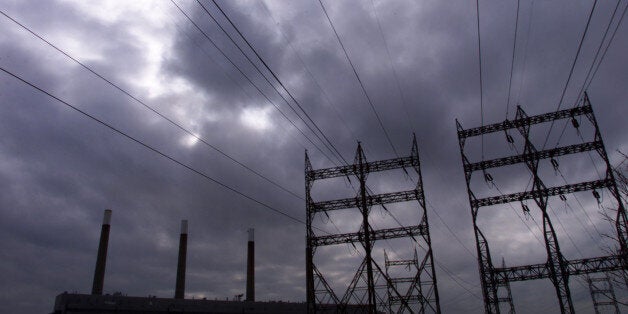
A few months ago, I was on a panel on a public affairs TV show talking about electricity supply and price. At the very end of the show, an economist panelist opined that the solution to keeping energy costs down was to reopen Ontario's coal plants and buy carbon credits to offset. I was shocked. Not only is coal burning the source of respiratory illness and mortality, cessation of coal burning is essential to the mitigation of climate change. How could he be so wrong?
I have now realized that most economists operate under a very different concept of the nature of atmospheric carbon then ecologists like myself. Their paradigm turns any and all carbon into a market commodity to be manipulated by price and economic tools. They don't share the ecologist's concern that such a simplistic model can lead to truly dangerous and perverse public policy. They don't understand that not all carbon that is being emitted by human activity is equivalent with respect to the biogeochemical cycles of the Earth.
There are two quite different major types of carbon emissions that humans have some degree of control over. One of these is the carbon that has been released as a result of the historic destruction of the Earth's natural ecosystems, euphemistically known as 'land use and land use change' in policy discussions. This source of carbon is limited in magnitude and at least to some degree the released carbon can be recaptured by the biological systems of the planet. The other type of carbon emissions come from fossil fuels. These emissions are virtually unlimited, cannot be reversed and if continued most certainly will bring about the destruction of human civilization. A public discussion of this dichotomy is needed before more perverse public policy decisions are made.
This difference can be illustrated by considering life in eastern Canada starting in the early 19th Century. If one ignores the nascent introduction of the steam locomotive, most transportation was horse-drawn. Horses emit quite large qualities of CO2 to the atmosphere per tonne hauled but this was not a greenhouse gas (GHG) problem. The horses were fuelled by grain and forage crops and the carbon in those crops had been fixed from the atmosphere, by energy from the sun, in that growing season or the one before. The CO2 was simply cycling in the biosphere as it had for millennia and no net GHG was accumulating.
There was, however, a GHG emissions problem emerging during that period. The vast and rapid clearing of the eastern forests that began then (and to some extent still continues), released carbon as CO2 into the air that had been accumulating in the tree biomass and especially in the forest soils for centuries. Since the agriculture we now practice does not allow those forests to regrow or the soils to regenerate to their original carbon content, that inventory of carbon (due to combustion or other oxidation) remains in the atmosphere as a GHG. But, such additions can be mitigated. To the extend we can regrow forests on available land and restore soil organic matter in our agricultural lands through better agronomy we can recapture and sequester some of this errant CO2 but my no means all of it. This potential for recapture presents an opportunity for public policy dealing with climate change which must be pursued with vigour.
The other source of atmospheric CO2 that emerged from the 19th Century is far more insidious. Humankind learned that we could access vast amounts of stored solar energy that were not limited by annual crop yields or the wood accumulated in our living forests. We began the extraction and combustion of coal, then oil, and then natural gas. Burning these fossil fuels produces CO2 or results in the release to the atmosphere of CH4, an even more powerful GHG. These carbon molecules were originally sequestered in the geology of the Earth millions of years ago. There is no mechanism in the biosphere or the geosphere for these carbon emissions of fossil origin to be quickly sequestered.
It is, therefore, incumbent on our policy systems that with some haste we constrict and eventually eliminate all CO2/CH4 of fossil origin. And we have started down this path with a variety of policies that allow fossil fuels to be displaced by renewable energy sources. But with fossil fuel energy so deeply embedded in our culture and our economy it is seen to be necessary to do this gradually. Our policies allow for some fossil origin emissions to continue in the interim if they can be "offset" by money being allocated to advance projects that sequester an equivalent amount of carbon by restoring a natural ecosystem or initiating a sustainable agricultural process somewhere else on the planet.
This 'one for one' fossil emission to ecological sequestration is helpful in the short term but it should not be mistaken as a solution to the problem. The carbon sequestered by the offset activity is part of what in would normally be the healthy biochemical cycles of the ecosystem. Creating a project that gets the carbon out of the atmosphere more quickly than would happen by natural biological processes reduces the GHG concentration in the short term. But that action is simply mitigating past ecological damage, it does not neutralize the long-term impacts of accumulating fossil carbon. The fossil carbon emission is still additive to the Earth's GHG problem.
There are two major sources of atmospheric carbon within human control. We can if we chose begin to reverse the deforestation and soil degradation that has been one of those major sources and improve the situation. But as long as we burn any amount of coal, oil or natural gas we are compounding and worsening the climate crisis. We must find a way to stop!
Follow HuffPost Canada Blogs on Facebook